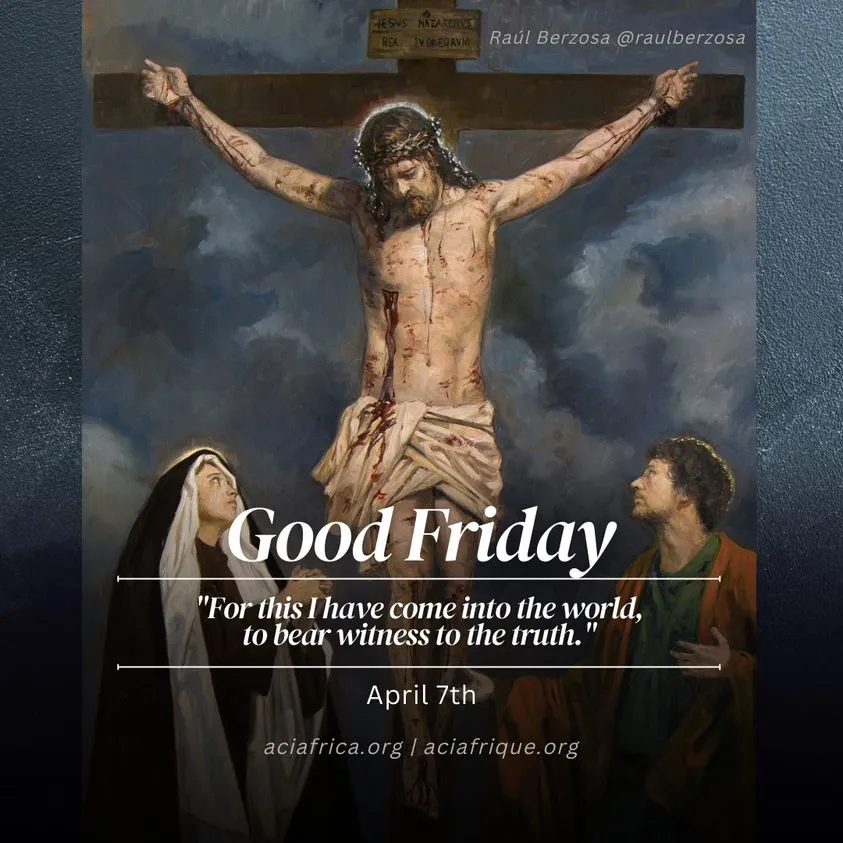Aboard the papal plane, 18 April, 2025 / 11:15 am (ACI Africa).
Each member of the Church tries to understand at what cost Christ has won our redemption. In the solemn ceremonies of Good Friday, in the Adoration of the Cross, in the chanting of the 'Reproaches', in the reading of the Passion, and in receiving the pre-consecrated Host, we unite ourselves to our Savior, and we contemplate our own death to sin in the Death of our Lord.
The Church - stripped of its ornaments, the altar bare, and with the door of the empty tabernacle standing open - is as if in mourning. In the fourth century, the Apostolic Constitutions described this day as a 'day of mourning, not a day of festive joy.'
The liturgical observance of this day of Christ's suffering, crucifixion, and death has been in existence from the earliest days of the Church. No Mass is celebrated on this day, but the service of Good Friday is called the Mass of the Presanctified because Communion which had already been consecrated on Holy Thursday is given to the people.
The omission of the prayer of consecration deepens our sense of loss because Mass throughout the year reminds us of the Lord's triumph over death, the source of our joy and blessing. The desolate quality of the rites of this day reminds us of Christ's humiliation and suffering during his Passion.
In the seventh century, the Church in Rome adopted the practice of Adoration of the Cross from the Church in Jerusalem, where a fragment of wood believed to be the Lord's cross had been venerated every year on Good Friday since the fourth century.
According to tradition, a part of the Holy Cross was discovered by the mother of the emperor Constantine, St. Helen, on a pilgrimage to Jerusalem in 326.
'We adore Thee, O Christ, and we bless Thee because by Thy Holy Cross, Thou has Redeemed the World.'



